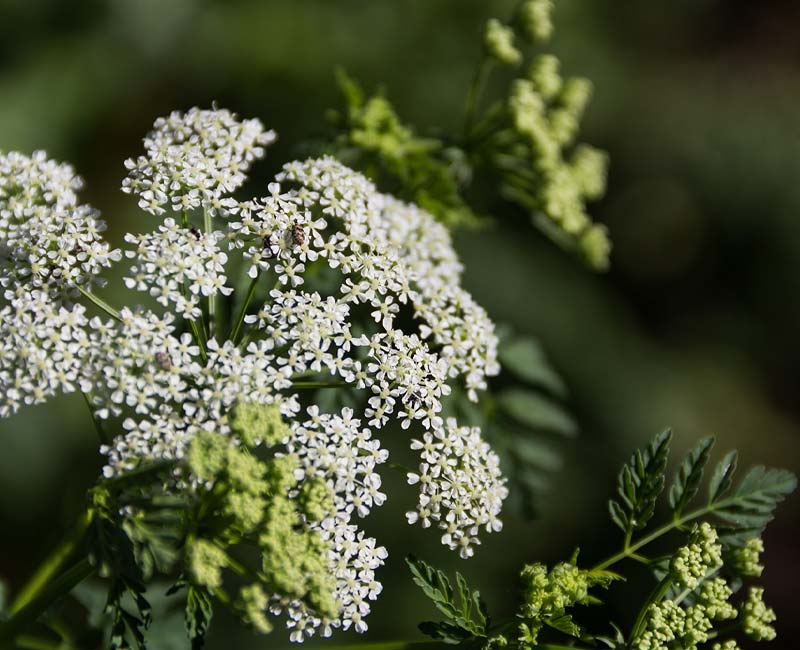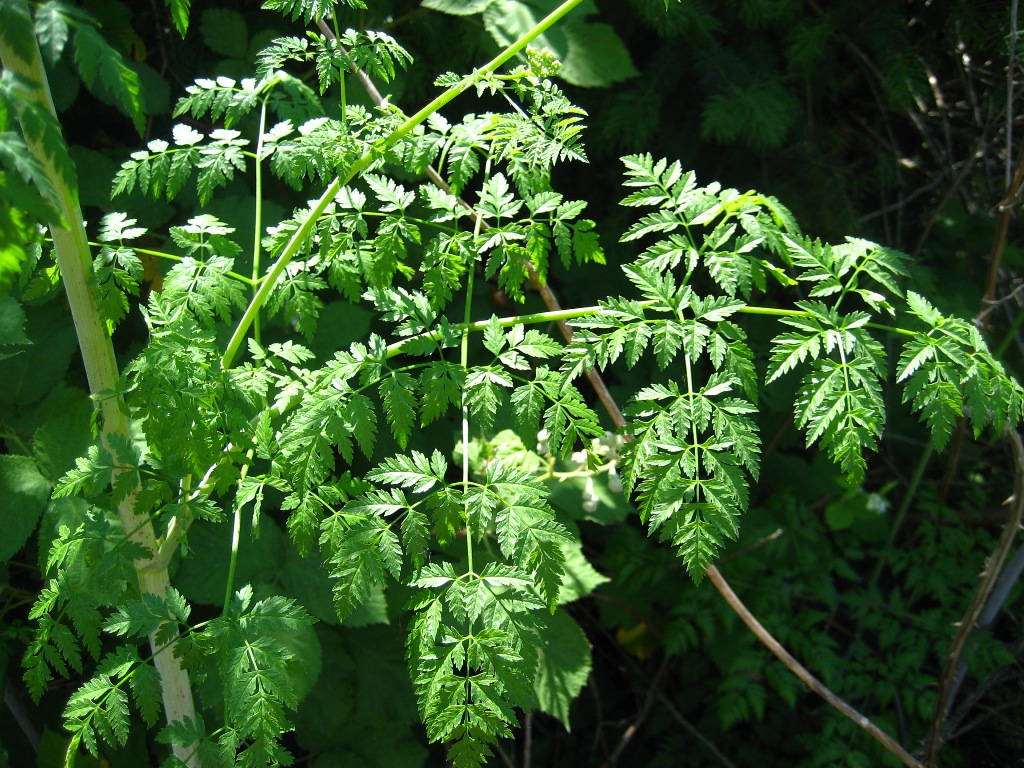Poisonous weed control in North Canton.

Things you should know about poisonous hemlock before you head outside this summer.
- All parts of the plant are toxic, especially the seeds and roots, and especially when ingested.
- Under the right conditions the plant grows quite rapidly during the growing season and can reach heights 8 feet, with a long penetrating root.
- The plant has a distinctive odor usually considered unpleasant that carries with the wind.
- The hollow stems are usually spotted with a dark maroon color and become dry and brown after completing its biennial lifecycle. The hollow stems of this toxic plant are deadly for up to three years after the plant has died
Toxicology
Hemlock is poisonous to all mammals that eat this plant. It has has been reported in cattle, pigs, sheep, goats, donkeys, rabbits, and horses. Ingesting more than six to eight hemlock leaves, can be fatal for adult humans. However, the seeds and roots are more toxic than the leaves.
Hemlock is most poisonous in the spring when the concentration of it's toxins are at their peak.
History of Hemlock
Poison hemlock has been on the rise for several years after first beginning its spread throughout southern Ohio. The plant was actually imported to the United States as an ornamental in the late 1800s from North Africa, Europe and West Asia. Since that time, poison hemlock has became a threat throughout Ohio.
This non-native plant is among the most deadly plants on the planet, containing highly toxic piperidine alkaloid compounds that cause respiratory failure and death in all mammals when ingested.
In ancient Greece, hemlock was used to poison condemned prisoners. It was also the plant that killed Theramenes, Socrates, Polemarchus, and Phocion. Socrates, being the most famous victim of hemlock poisoning.
Where to find it.
Poison hemlock can survive in nearly all types of soil condition but seems to be most prevalent along woodland edges and along the banks of streams, ditches or any other waterway.
This plant has spread exponentially in just the past two or three years. Each plant can produce thousands of seeds, which are spread by wind, water, birds and when mowed. The seeds could remain viable in the soil for up to six years.
What you should know as you head outdoors in North Canton and surrounding communities.
All parts of the plant are poisonous including the leaves, stems, seeds and roots BUT they must be ingested or enter through the eyes or nasal passages to be toxic.
Contrary to popular belief, contact with poison hemlock does not cause skin blistering or rashes but the potential exists for the toxins in the sap to enter the body if rubbed from the skin into the eyes or mouth.
Immediate emergency medical attention is needed if an accidental poisoning from this plant is suspected.
Poison hemlock is in the carrot family and can be mistaken for other plants in this same family including Queen Anne’s lace or wild parsnip.
Extreme care should be taken when mowing, hand-pulling or cutting these plants and a string trimmer should never be used to cut these plants. When working around these plants, plants proper protective gear should be worn including protective eyewear, gloves, and long-sleeved shirt and pants. The most dangerous time to control this plant is when it is large and flowering in its reproductive stage during its second year of growth.

Information sourced from Wikipedia and The Columbus Dispatch